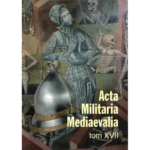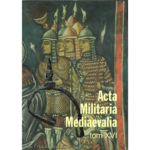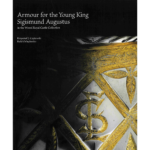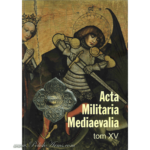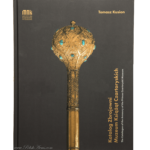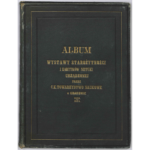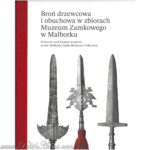
PDF – The Art of War of Slavs
 |
‘THE ART OF WAR OF SLAVS IN THE LIGHT OF BYZANTINE MILITARY TREATIESS’
by PIOTR GROTOWSKI |
This is the article from the 1st volume of the archaelogical magazine Acta Militaria Medievalia, published a few years ago. All copies of the book were sold quite fast, so the publisher (Museum of Sanok and Polish Academy of Science), decided to put PDF version of the magazine on the web.
Below you’ll find the file for download with the article (PDF file compressed with rar). The file includes copyable text, you can later put into the translator on this site. Below you can read English summary of the paper.
 |
(1,8 MB) |
SUMMARY
The earliest historical sources describing the customs of Slavs are the accounts of Greek writers. The information on warfare customs may be found not only in the chroniclers’ accounts but also in military handbooks. Although treaties of this type are a continuation of ancient military writing and tend to imitate its forms, due to their utilitarian character they may be regarded as a particularly credible source for a historian. This category of texts may be divided into three groups according to their value for the studies of the weaponry and tactics of Slavs. The earliest treaties created until the mid 6th century and subsequent highly specialist handbooks on water combat, the art of siege, and the methods of harassing Arabs do not contain any significant knowledge on Slavs.
The second group consists mainly of two extensive treaties from the latter half of the first millennium: Strategikon, attributed to Emperor Maurice, and Tactics by Leon VI modelled on the former work. In both works the description of Slavonic Sklawoi and Antoi and the remarks on their military customs are a paraphrase of the description contained in Wars by Procopius of Caesarea [VII 14/25-26]. They describe the weapons of Slavs as consisting of javelins, bows, and small shields – the equipment of light armoured troops. The tactics of those tribes was limited to setting up ambushes, whilst in open fights they were defeated even by a less numerous enemy. On the one hand, such a picture is in sharp contrast to the knowledge about the excellently armed and armoured Avar, Persian and Bulgarian troops, while on the other, it appears to confirm the opinions about the peaceful character of Slavs and their friendly attitude to strangers. Bearing this in mind, their successful confrontation with Byzantium in the Balkans in the 6th-7th centuries should be explained by the simultaneous involvement of Byzantium in the war against Persia, the decisive role played by the Avars remaining in coalition with Persians, and their numerical strength. The third group is made up of the latest treaties from the second half of the 10th and 11th centuries. They are much more precise in characterising the individual nations: Serbs, Bulgarians, and Ruthenians. They also differ in the realities described and in the details of descriptions. The most information is contained in the latest Byzantine military handbook – Strategikon by Kekaumenos (the 3rd quarter of the 11th cent). It is the result of its form, distinguishing it from the earlier treaties, which made frequent allusions to the examples taken from historical events, as well as from the family bonds of the author who probably came from Thessalia.
Apart from the descriptions known from other sources, such as the siege of Thessaloniki by Alusianos in 1041, special attention should be paid to the reference of the use of hand-wielded Greek fire siphons by the Bulgarian defenders of the Moir castle against the besieging troops of Basil II. Both the fact of possessing technologically advanced weapons and other information conveyed by this group of treaties create, unlike in other contemporary handbooks, a picture of well armed and trained troops of individual Slavic states, whose military value was parallel to the Byzantine army. The difference between perceiving the military strength of Slavs in the handbooks from 6th/7th and 9th/10h centuries and in the latest treaties from the end of the 10th and 11th centuries indicates the changes in the art of war of that ethnic group, which is also confirmed by the archaeological material. The weaponry and tactics of the Slavic neighbours of the Empire changed substantially from their first appearance on the River Dunaj to the formation of independent states in the 10th cent., and were adapted to the warfare methods of their enemies.
Translated by Ireneusz Paternoga
